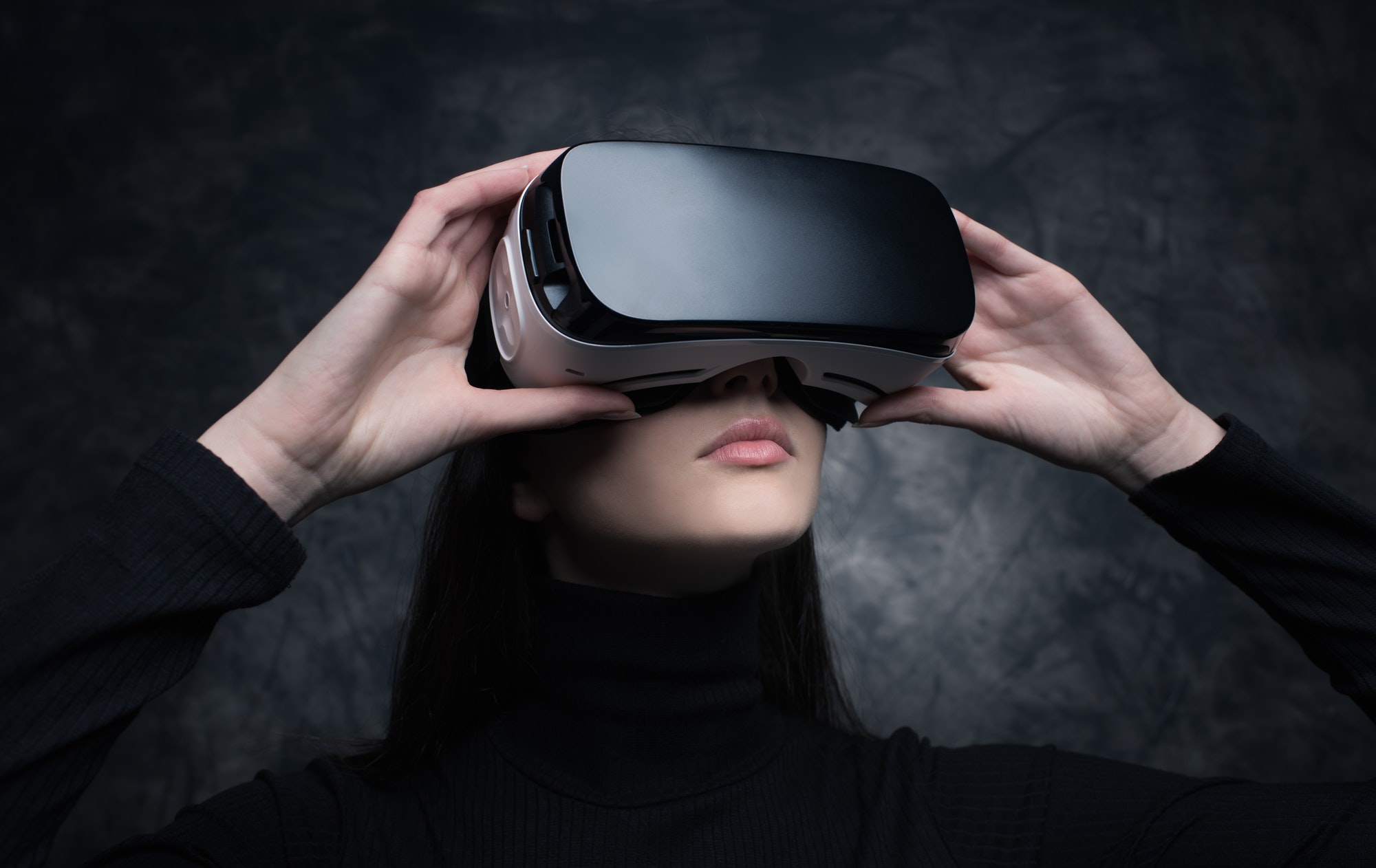by Rich Mesch
Another year, another learning trend, am I right? This year everybody’s talking about Virtual Reality, another trend that will eventually burn itself out, right?
Actually, no. Virtual Reality is definitely getting a lot of attention, but unlike a lot of learning trends, VR has some solid research behind it and some interesting proof points.
What is Virtual Reality?
Virtual Reality (VR) is a number of different technologies that are designed to create experiences that mimic real-life experiences. For a while “virtual worlds” were popular, where you piloted a character called an avatar around a 3-D environment. Modern VR, however, is very focused on sight and sound. VR users typically wear headsets that only allow them to see the computer-generated world. As a result, users may genuinely feel like they are in another place. In a recent demo, VR users teetered on a virtual plank hundreds of feet up in the air, terrified of falling–all the while knowing in their hearts that they were safe in a carpeted conference room.
HTC Vive and Oculus Rift are among the most popular high-end consumer VR systems, but basic systems are as accessible as Google’s $10 Cardboard viewer, designed to be used with your smartphone.
What is Augmented Reality?
Augmented Reality (AR) uses technology to add a layer of information over real-world images. Probably the most widespread example of AR was the popular game Pokémon Go, which inserted cartoon characters into real-world environments when viewed through your smartphone. However, there’s more to AR than games; check out this example of BMW providing mechanics with real-time repair info as they work on vehicles:
So why should you be taking a closer look at VR and AR?
1. It lowers risk
Experiential learning has demonstrated benefits for knowledge retention, comprehension, and behavior change. In many ways, VR provides the actual experience in a much safer environment. VR applications provide a low-risk way for participants to experience high-risk environments such as construction, hazardous repair situations, and interacting with heights and dangerous machinery. Gaining comfort in a VR environment provides emotional impact in a way other simulated environments don’t (remember that plank example above?).
2. It may speed time to performance
There is a substantial body of research suggesting that simulation and experiential learning help reduce time to performance. VR is certainly experiential learning, but do we know if it will continue to flatten the curve? The body of research isn’t huge yet, but medical training data (which uses VR and AR extensively) suggests that surgeons acquire skills more rapidly in VR environments than in traditional learning approaches.
3. It creates excitement
When was the last time your workforce got excited about training? During a recent visit to the massive MGM Grand resort in Las Vegas, I observed dozens of people patiently standing in a long line in the lobby. They weren’t waiting for a glitzy show or a high-stakes table. They wanted to try MGM’s new VR experience. There’s no question about it; VR gains attention. And once you have learners’ attention, you can actually help them learn something.
4. Your workforce is already using it
While many analysts are predicting that mainstream adoption of VR is 3-5 years off, that doesn’t mean people aren’t using it. The 2017 Virtual Reality Consumer Survey showed that nearly half of the respondents owned their own VR headsets, and over 40 million headsets are expected to be in use by 2020. Google’s next-generation Daydream viewer will be standalone, requiring neither computer nor smartphone. And organizations like Lowe’s, Wal-Mart, and BMW have already adopted VR and AR into their training approach.
5. It’s not as complicated as you think
Technology is more accessible than ever, and the cost of entry is surprisingly affordable. The growth of third-party development tools mean that more companies are able to develop content, providing easier access and more variety. And while there are plenty of high-end, high-cost options out there, most of the smartphone-based systems are just a few dollars.
However, the ability to deploy VR learning is just the first step. Most VR learning is completely experiential, meaning in many cases it doesn’t fit the traditional “course completion” measurement standard. So using VR may require your organization to shift the way they think about learning and performance improvement—which is a bigger job than new technology.

Rich Mesch is Vice President, Customer Engagement at Performance Development Group. A frequent contributor to industry events and publications, his most recent article was 5 Strategies for Choosing a Learning Outsourcing Partner for Training Industry magazine.
